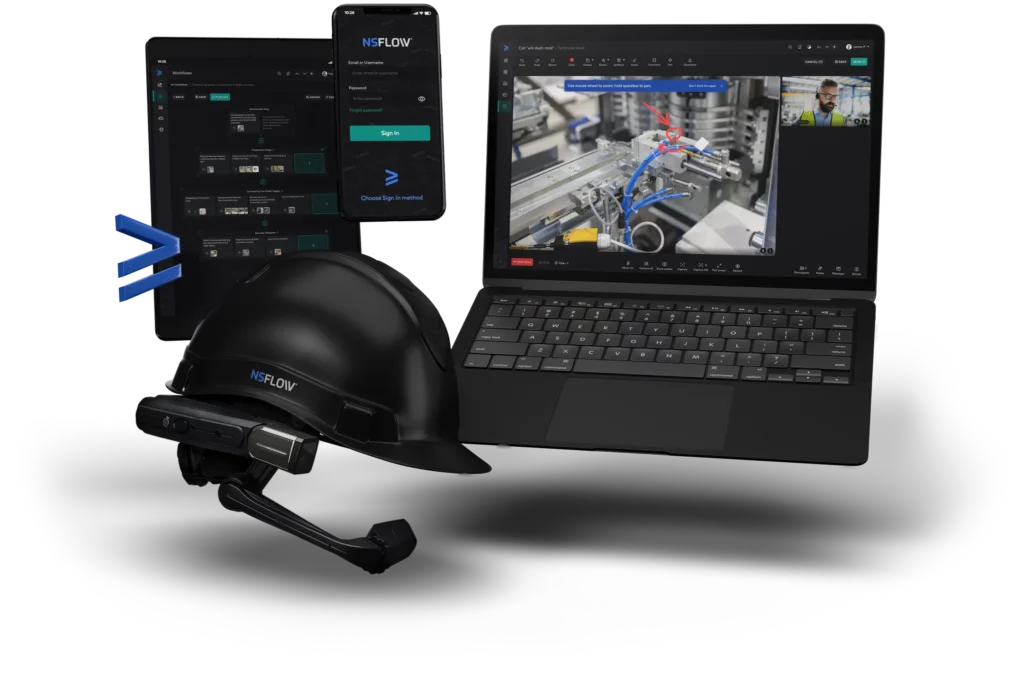The growing significance of AR business adoption has a transformative impact on various industries, especially on manufacturing. In this article, I provide you with the key considerations for implementing AR, advice you on how to choose the right AR partner, and suggest the best practices for a successful rollout. By the end, you’ll understand why AR adoption is crucial for staying competitive and future-proofing your business.
Does Your Business Need Augmented Reality Technology?
Research strongly indicates that businesses integrating AR experience significant advantages. According to a PwC report, AR and VR could contribute $1.5 trillion to the global economy by 2030, driven by improvements in productivity and customer experiences. Moreover, a Harvard Business Review study shows that AR-enhanced training boosts retention rates by 75%. Companies that adopt AR are better positioned to optimize operations, improve employee skills, and provide immersive customer experiences, gaining a competitive edge.
In the following sections, I will walk you through a step-by-step guide to successfully adopting AR in your business and explain how to choose the right AR partner for your needs.
Key AR Use Cases in Business
Thanks to AR adoption, businesses across various sectors are unlocking new opportunities for growth and innovation. Here are some key applications:
AR for Advanced Training
AR creates immersive learning environments that enhance hands-on training. In industries like healthcare, AR is used for medical simulations, enabling students to practice surgeries in a virtual setting. Manufacturing incorporates augmented reality industry training on equipment operation and safety protocols without the need for physical resources. In aviation, AR assists pilots and technicians in mastering complex tasks through virtual simulations, reducing training costs and improving retention.
AR in Remote Inspections and Auditing
AR enables remote site inspections and auditing, allowing companies to conduct assessments from anywhere. In construction, AR facilitates virtual walkthroughs, enabling inspectors to assess safety and progress remotely. Similarly, in oil & gas, AR is used for equipment monitoring and compliance remote auditing, allowing teams to resolve issues without being physically present on-site. This improves safety, reduces travel costs, and accelerates decision-making.
AR in Machine Visualization and Design
AR improves machine visualization and design by enabling engineers and designers to see holograms and 3D models in real-world environments. In the automotive industry, AR helps visualize vehicle components, enabling design teams to spot issues before production. Architecture firms use AR to provide clients with interactive building models, allowing for real-time adjustments and reducing costly errors during construction. AR accelerates also product development by streamlining collaboration and improving design accuracy.

presentation to try
Nsflow in action
3 Steps for a Successful AR Business Adoption
Successfully implementing AR in your business requires careful planning and alignment with strategic goals. This guide covers the essentials before implementation, including identifying key business needs, assessing where AR can add the most value, and assessing the technical requirements necessary for a smooth transition.
- Allign AR applications with your specific business objective
For instance, if your goal is to enhance employee training, AR can offer immersive, hands-on learning experiences. However, success depends on your readiness for digital transformation. Assess the existing processes and identify where AR can drive measurable improvements. For example, in our TKM Project case, AR implementation resulted in timely execution of acceptance tests, which previously encountered many difficulties and the threat of refusal to implement the next phase of the client’s project. This, poper planning ensures AR integrates seamlessly into your business model, driving tangible ROI.
- Understand Your Business Needs
Define the areas where it can deliver the most value. Focus on the key problems AR can solve, such as improving training efficiency, enhancing factory maintenance, or streamlining production processes. Evaluate your business challenges and identify how AR’s unique capabilities can offer scalable solutions, whether it’s creating a more engaging customer experience or increasing operational efficiency.
- Evaluate Technical Requirements
To successfully implement AR, you need to evaluate the technical infrastructure your company requires. AR applications demand reliable hardware, such as smart glasses or mobile devices, along with robust software platforms for creating and managing AR content. Some providers, like Nsflow, have it all-inclusive, but you also need to do some research on the hardware and features the specific AR platform offers. Additionally, you must be aware that AR solutions may require seamless integration with existing systems, such as enterprise resource planning (ERP) software, so assess your IT capabilities and plan for any necessary upgrades.
How to Choose the Right AR Partner?
Selecting the right AR partner is key to the successful adoption of AR technologies in your business. The ideal partner should offer industry-specific expertise and be able to provide tailored solutions that align with your operational goals. Companies like Nsflow bring technical prowess with solutions like their Digital Workflow and Remote Support modules. These tools enhance training, streamline service procedures, and facilitate real-time remote assistance. The partner’s post-implementation support is equally crucial, guaranteeing the continuous optimization of your AR solution for future requirements.
Assessing AR Vendors
When evaluating AR vendors, use a structured checklist to make an informed choice:
- Proven Industry Experience: Does the vendor have a track record in implementing AR in your specific industry?
- Customer Testimonials and Case Studies: Look for examples of success. For instance, Nsflow has successfully deployed their Digital Workflow module in industries like manufacturing, helping businesses create interactive training and service procedures.
- Integration Capabilities: Ensure the AR solution integrates seamlessly with your existing IT systems. Nsflow’s remote support can integrate with your infrastructure while offering AR-enhanced hands-free guidance for technicians on the field.
Key Questions to Ask Potential Partners
During consultations, ask the following questions to determine if the vendor can meet your needs:
- What ROI can we expect from implementing your AR solutions, such as Nsflow’s remote support or digital workflows?
- Can your solution be customized to fit our specific use cases, such as remote audits or machinery maintenance?
- What level of post-implementation support do you provide? Inquire about ongoing updates, training, and technical assistance to ensure long-term success. By focusing on these questions, you can ensure that the chosen AR partner will deliver the right technology and support to meet your business goals effectively.
Data Storage in AR Business Adoption
When considering AR business adoption for your business, you need to understand and consider several data storage options. This is crucial for data security, availability, and performance of your company’s AR platform.
The main difference between cloud and on-premises storage for AR platforms is data availability and control. Cloud storage offers flexibility, remote access, and scalability, allowing teams to collaborate in real-time across multiple locations. However, it can raise concerns about data security and reliance on third-party services. On-premises storage offers more control and security, as all data is stored locally. However, it does require higher upfront costs and ongoing maintenance.
Alternatively, your company can use a solution like Nsflow Box. This plug-and-play AR platform is ideal for companies without a cloud. Nsflow Box can operate independently of the internet, offering secure storage and connectivity via a built-in LTE modem or local area network. It integrates easily with AR glasses, tablets, and smartphones.

AR Business Adoption: A Short Conclusion
In conclusion, adopting AR technology can drive transformative change in your business, but its success depends on several factors like choosing the right partner, understanding storage options, and ensuring seamless integration with your existing infrastructure.
Curious to see how AR can enhance your operations? Try a free demo of the Nsflow AR platform today to explore its full potential for your business.
AR business adoption is transforming industries like manufacturing by streamlining operations and boosting efficiency. In this guide, you’ll discover how to implement AR, select the right partner, and stay ahead of the competition. Ready to experience the power of AR? Try the Nsflow AR platform for free. Start your demo now:



















